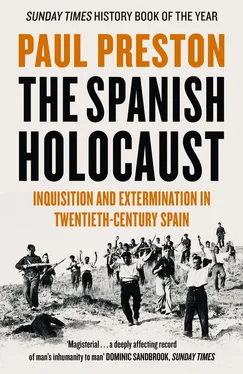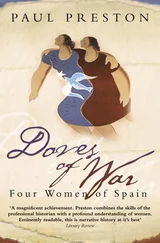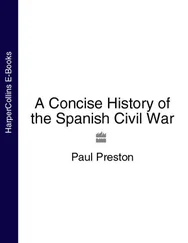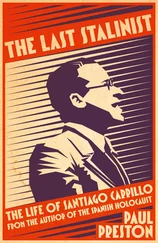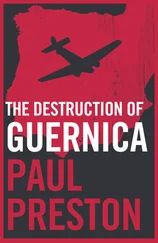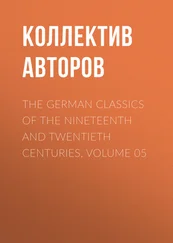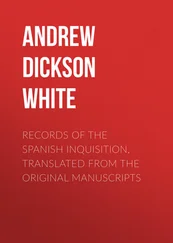Even if there were agents provocateurs involved, many on the left were convinced that the Church was integral to reactionary politics in Spain and physical attacks were carried out in some places by the more hotheaded among them. In many villages in the south, priests had stones thrown at them. For those on the right, the identity of the true culprits mattered little. The church burnings confirmed and justified their prior hostility to the Republic. Nevertheless, Miguel Maura, the Minister of the Interior, commented bitterly: ‘Madrid’s Catholics did not think for a second that it was appropriate or their duty to make an appearance in the street in defence of what should have been sacred to them.’ There were serious clashes in many small towns (pueblos) where the faithful protected their churches from elements intent on profaning them. Later in May, when the provisional government decreed an end to obligatory religious education, there were many petitions in protest. 26
While most of Spain remained peaceful, from the earliest days of the Republic an atmosphere of undeclared civil war festered in the latifundio zones of the south and in other areas dominated by the CNT. Miguel Maura claimed that, in the five months from mid-May 1931 until his resignation in October, he had to deal with 508 revolutionary strikes. The CNT accused him of causing 108 deaths with his repressive measures. 27This was demonstrated most graphically by the bloody conclusion to a period of anarchist agitation in Seville. As the culmination of a series of revolutionary strikes, the anarchist union called a general stoppage on 18 July 1931. This was directed not just at the local employers but also at the CNT’s local rivals in the Socialist Unión General Trabajadores. There were violent clashes between anarchist and Communist strikers on the one hand and blacklegs and the Civil Guard on the other. At the cabinet meeting of 21 July, the Socialist Minister of Labour, Francisco Largo Caballero, demanded that Miguel Maura take firm action to end the disorders which were damaging the Republic’s image. When the Prime Minister, Niceto Alcalá Zamora, asked if everyone was agreed that energetic measures against the CNT were called for, the cabinet assented unanimously. Maura told Azaña that he would order artillery to demolish a house from which anarchists had fired against the forces of order. 28
Meanwhile, on the night of 22–23 July 1931, extreme rightists were permitted to take part in the repression of the strikes in Seville. Believing that the forces of order were inadequate to deal with the problem, José Bastos Ansart, the Civil Governor, invited the landowners’ clubs, the Círculo de Labradores and the Unión Comercial, to form a paramilitary group to be known as the ‘Guardia Cívica’. This invitation was eagerly accepted by the most prominent rightists of the city, Javier Parladé Ybarra, Pedro Parias González, a retired lieutenant colonel of the cavalry and a substantial landowner, and José García Carranza, a famous bullfighter who fought as ‘Pepe el Algabeño’. Arms were collected, and the Guardia Cívica was led by a brutal Africanista, Captain Manuel Díaz Criado, known as ‘Criadillas’ (Bull’s Balls). On the night of 22 July, in the Parque de María Luisa, they shot four prisoners. On the following afternoon, the Casa Cornelio, a workers’ café in the neighbourhood of La Macarena, was, as Maura had promised Azaña, destroyed by artillery fire. Elsewhere in the province, particularly in three small towns to the south of the capital, Coria del Río, Utrera and Dos Hermanas, strikes were repressed with exceptional violence by the Civil Guard. In Dos Hermanas, after some stones had been thrown at the telephone exchange, a lorryload of Civil Guards arrived from Seville. With the local market in full swing, they opened fire, wounding several, two of whom died later. In total, seventeen people were killed in clashes in the province. 29
Azaña’s immediate reaction was that the events in the park ‘looked like the use of the ley de fugas’ (the pretence that prisoners were shot while trying to escape) and he blamed Maura, commenting that ‘he shoots first and then he aims’. Azaña’s reaction was influenced by the fact that Maura had recently hit him for accusing him of revealing cabinet secrets to the press. Two weeks later, he learned that the cold-blooded application of the ley de fugas was nothing to do with Maura but had been carried out by the Guardia Cívica on the orders of Díaz Criado. 30The murders in the Parque de María Luisa and the shelling of the Casa Cornelio were the first in a chain of events leading to the savagery of 1936. Díaz Criado and the Guardia Cívica would play a prominent role both in the failed military coup of August 1932 and in the events of 1936.
The events in Seville and the telephone strike were symptomatic of clashes between the forces of order and the CNT throughout urban Spain. In Barcelona, in addition to the telephone conflict, a strike in the metallurgical industry saw 40,000 workers down tools in August. The activist FAI increasingly advocated insurrection to replace the bourgeois Republic with libertarian communism. Paramilitary street action directed against the police and the Civil Guard was to be at the heart of what the prominent FAI leader Juan García Oliver defined as ‘revolutionary gymnastics’. This inevitably led to bloody clashes with the forces of order and with the more moderate Socialist UGT. The consequent violence in Barcelona, Seville, Valencia, Zaragoza and Madrid, although directed against the government, was blamed by the right on the Republic. 31
The unease thereby fomented among the middle classes was consolidated among Catholics by the anti-clericalism of the Republic. Little distinction was made between the ferocious iconoclasm of the anarchists and the Republican–Socialist coalition’s ambition to limit the Church’s influence to the strictly religious sphere. Right-wing hostility to the Republic was mobilized fully, with clerical support, in the wake of the parliamentary debate over the proposed Republican Constitution. The text separated Church and state and introduced civil marriage and divorce. It curtailed state support for the clergy and ended, on paper at least, the religious monopoly of education. The proposed reforms were denounced by the Catholic press and from pulpits as a Godless, tyrannical and atheistic attempt to destroy the family. 32The reaction of a priest from Castellón de la Plana was not uncommon. In a sermon he told his parishioners, ‘Republicans should be spat on and never spoken to. We should be prepared to fight a civil war before we tolerate the separation of Church and State. Non-religious schools do not educate men, they create savages.’ 33
The Republic’s anti-clerical legislation was at best incautious and at worst irresponsible, perceived on the right as the fruit of Masonic-inspired hatred. Republicans felt that to create an egalitarian society, the power of the Church education system had to be replaced with nondenominational schools. Many measures were easily sidestepped. Schools run by religious personnel continued as before – the names of schools were changed, clerics adopted lay dress. Many such schools, especially those of the Jesuits, tended to be accessible only to the children of the rich. There was no middle ground. The Church’s defence of property and its indifference to social hardship inevitably aligned it with the extreme right. 34
Substantial popular hostility to the Republic’s plans for changes in the social, economic and religious landscape was garnered during the so-called revisionist campaign against the Constitution. Bitter right-wing opposition to the Constitution passed on 13 October was provoked by plans to advance regional autonomy for Catalonia and to introduce agrarian reform. 35Nevertheless, it was the legalization of divorce and the dissolution of religious orders – seen as evil Masonic machinations – that raised Catholic ire. 36During the debate on 13 October 1931, the parliamentary leader of Acción Popular, José María Gil Robles, declared to the Republican–Socialist majority in the parliament, the Cortes, ‘Today, in opposition to the Constitution, Catholic Spain takes its stand. You will bear responsibility for the spiritual war that is going to be unleashed in Spain.’ Five days later, in the Plaza de Toros de Ledesma, Gil Robles called for a crusade against the Republic. 37
Читать дальше
